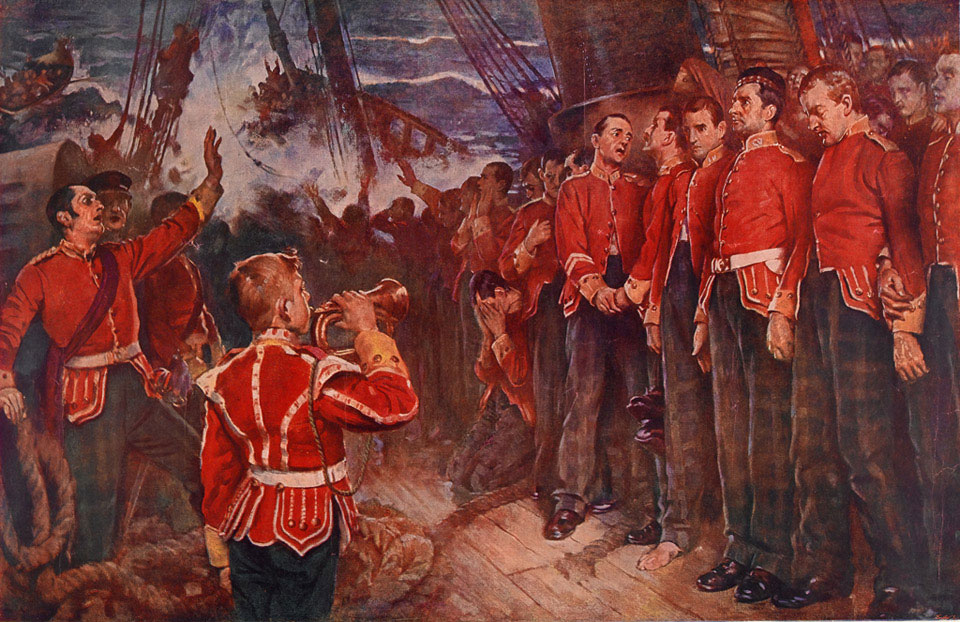
Online Collection
« Prev - 1 of 1 results - Next »
'The sinking of the "Birkenhead" February 25 1852 A Story That Will Never Die', 1899 (c)
Photochromolithograph from the painting by Lance Calkin, 1899 (c).
Men of the 74th Regiment line up on the deck of the steam transport 'Birkenhead' which sank off the coast of South Africa on 26 February 1852. She was carrying 480 officers and men as reinforcements for British troops engaged in the 8th Cape Frontier War (1850-1853). Besides the soldiers and crew, there were about 26 women and children on board. As she rounded the Cape, the ship struck the rocks off Danger Point. Water rushed in through the damaged hull and drowned many soldiers in their hammocks. The remainder assembled on deck, manned the pumps and helped the few lifeboats with the women and children safely away.
As the ship broke up, Colonel Seton of the 74th Foot called on the soldiers to 'Stand fast!'. If they jumped overboard they might endanger the boats, which were close by. They kept ranks and went down with the ship in shark-infested waters. There were only 193 survivors out of 638 passengers and crew; but all the women and children were saved. The incident captured the world's imagination and the story was read aloud to every regiment in the Prussian Army as an example of supreme discipline, courage and self-sacrifice. The disaster gave rise to the 'Birkenhead Drill' meaning 'women and children first'.
NAM Accession Number
NAM. 1999-04-126-1
Copyright/Ownership
National Army Museum, Out of Copyright
Location
National Army Museum, Study Collection
Object URL
https://collection.nam.ac.uk/detail.php?acc=1999-04-126-1

